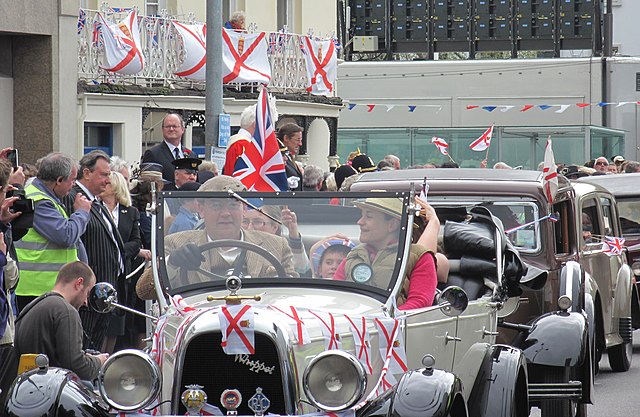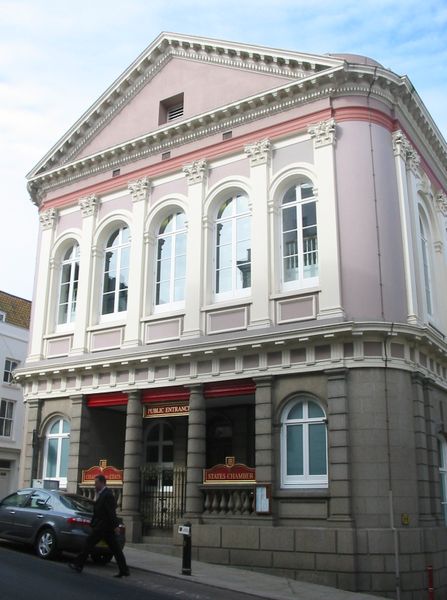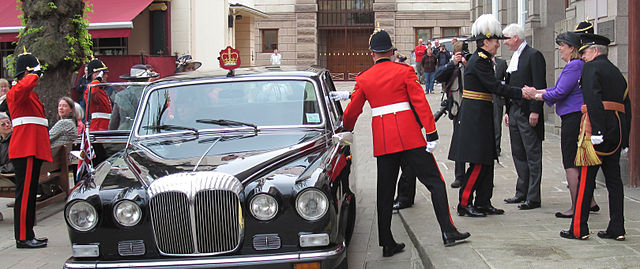The Corn Riots, also known as the Jersey Revolution, was a revolt which took place in Jersey on 28 September 1769. In an example of direct action against government oppression, under the government of Lieutenant Bailiff Charles Lemprière, hundreds of Jerseymen marched from the north of the island to the south and occupied the Royal Court. The revolt is a significant point in Jersey political history, as the powers of legislation were removed from the Royal Court and placed in the States Assembly.
St Helier in 1809, 40 years after the Corn Riots
Elizabeth Castle has from time to time been used as a meeting point for the States.
The Royal Court building, La Cohue, in a painting of the Royal Square, dated 1852
1771 Code des Lois, an outcome of the revolt
Jersey, officially known as the Bailiwick of Jersey, is an island country and self-governing British Crown Dependency near the coast of north-west France. It is the largest of the Channel Islands and is 14 miles (23 km) from the Cotentin Peninsula in Normandy. The Bailiwick consists of the main island of Jersey and some surrounding uninhabited islands and rocks including Les Dirouilles, Les Écréhous, Les Minquiers, and Les Pierres de Lecq.
An 1893 painting of the Assize d'Heritage by John St Helier Lander
Liberation Day celebrations in Jersey, 9 May 2012
The States building in St. Helier
Sir John Chalmers McColl as Lieutenant Governor of Jersey








